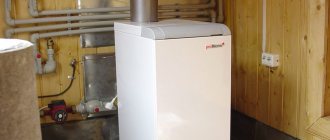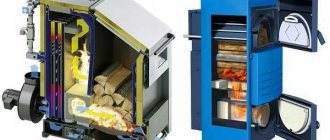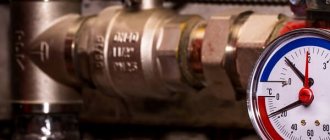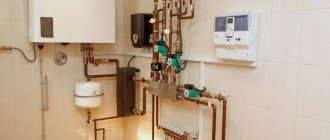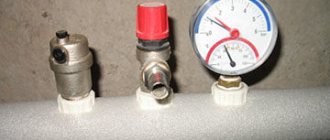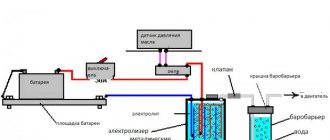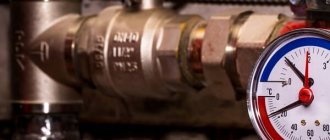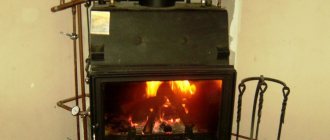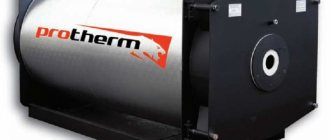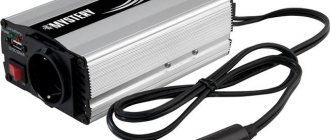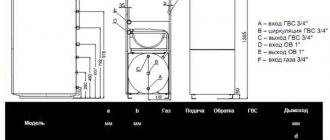Definition of the concept
There is no mental refinement in defining this type of heating boiler. Liquid fuel boilers are boilers that run on liquid fuel such as diesel fuel, also known as diesel fuel.
The main purpose of a liquid fuel boiler is to heat the house by heating the coolant of the heating circuit. Depending on the brand of the boiler, it can perform an additional function, namely, heat water in the water supply system, creating a hot water supply circuit. In general, no super tasks, just the usual tasks of all heating boilers.
Operating principle and parameters
If we talk about the operating principle of such boilers, then in many ways they are similar to floor-type gas boilers. The main difference lies in their design features. Liquid fuel homemade heating boilers during testing are equipped with a fan burner, regardless of what power parameters the boiler has. The role of such a burner is as follows: it sprays fuel under high pressure and supplies it to the combustion chamber. The fuel is atomized into small droplets as it passes through the injector. After this, the fuel takes on a mist-like form and mixes with air, which is pumped by the boiler fan. The mixture of fuel and air enters the gas burner and after that the process of ignition occurs.
A boiler operating on liquid fuel can be equipped with an additional boiler regulator. This regulator controls various devices that are connected to the boiler, such as the pump and also the burner.
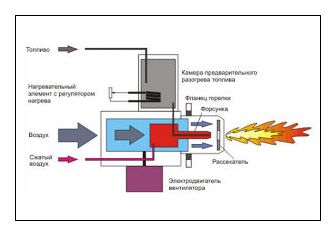
Operating principle of an oil-fuel boiler
The most important parameter of an oil-fuel boiler, as well as boilers of other types, is its power. To determine how much power liquid fuel heating boilers should have in order to heat a house most efficiently, you will need to carry out a detailed thermal engineering calculation. It is necessary to take into account such details as: the number of windows and doors, their location, the thickness of the walls, the thickness of the ceilings. Even the number of people living in the house can also be taken into account. This calculation can be carried out by a specialist from the company from which you purchase liquid fuel heating boilers. You can independently make an approximate calculation of the boiler parameters that will be required to organize the heating system. For a house with a ceiling height of 3 meters and fairly insulated walls of 10 square meters. meters of area will require approximately 1 kW of boiler power.
Many boilers operating on liquid fuel can also be operated using a gas burner. Such a heating boiler using diesel fuel will be justified if there are plans to install a gas main near the house in the near future.
In order to transfer a boiler from one type of fuel to another, you will need to carry out some procedures. Such procedures are best left to professionals. We are talking about cleaning the smoke channels and setting up a new burner.
Calculation of fuel quantity per month and per season
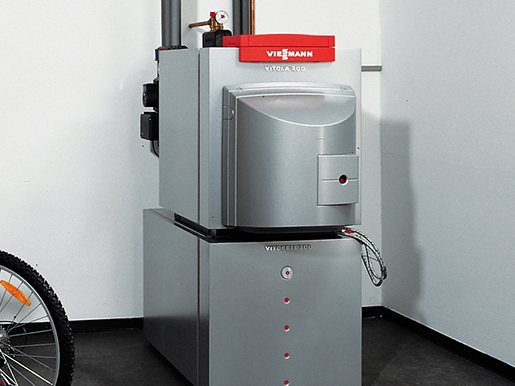
To find out which diesel boiler is right for you, you need to calculate the approximate consumption of diesel fuel for one month and the entire heating season. The amount of diesel fuel (DF) for heating a house depends on many parameters: the area of the house, the quality of thermal insulation of the walls, ceiling height, winter air temperature in your region, the number of sections in the radiators. It is impossible to take into account absolutely all parameters, but we can approximately calculate how much diesel fuel the model you need consumes, based on the area of the room.
It is believed that to heat 10 square meters of a house built according to all standards, 1 kW of boiler thermal power is needed. Liquid fuel equipment consumes a mass of diesel fuel equal to 10 parts of its power. That is, a 15 kW device consumes 15 * 0.1 = 1.5 kg of diesel fuel per hour. Accordingly, to calculate consumption per day, you should multiply this figure by 24. For example, a 20 kW model uses 20 * 0.1 * 24 = 48 kg of fuel per day.
Fuel consumption per month is equal to the daily volume multiplied by 30. 30 kW equipment, for example Ferroli Atlas D 30, consumes 30 * 0.1 * 24 * 30 = 2160 kg per month. The duration of winter varies greatly depending on the region of residence. When making calculations, you need to take the indicator of your area. Let's take for example the average of 111 days, from November 27 to March 17.
The final formula for calculating fuel for the heating season is as follows: boiler power * 0.1 * 24 hours * number of cold days. Let's make calculations for the boiler of the South Korean company Kiturami Turbo. The Kiturami Turbo 13 device has a power of 15.1 kW. Substituting this value into the formula, we get: 15.1 kW * 0.1 * 24 hours * 111 days = 4022.64. This means that per year you will spend approximately 4 tons of diesel fuel to heat a house with an area of 150 square meters.
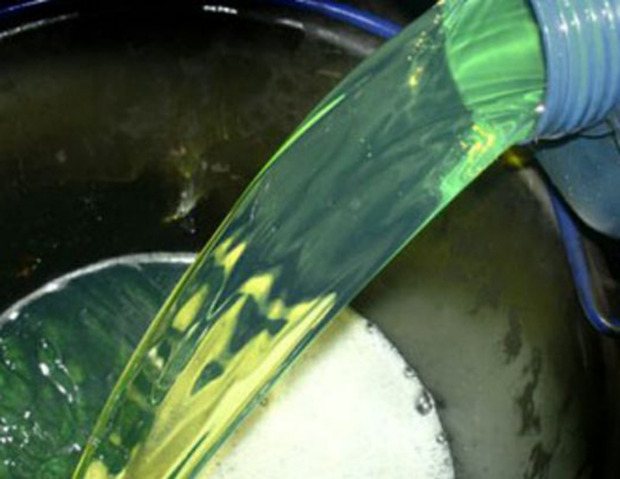
It is also recommended to select the boiler power with a reserve so that the heating equipment operates at maximum power less often. This will extend the life of the device.
Fuel consumption
To avoid such troubles as a lack of fuel during cold weather, you need to calculate the required amount of diesel fuel to heat the room. This will affect the volume of installed capacity and the cost of additional fittings. The power of the boiler and the amount of energy used depend on the area of the heated room.
When determining the size of the tank and the amount of fuel, so that it is enough for the entire heating season, you need to multiply the boiler burner power by a factor of 0.1. There is another calculation option, which takes as a basis that for every 10 kW of power, 1 kg of fuel is consumed per hour.
When calculating the amount of fuel required in this way, do not forget that the boiler will not always operate at full power, this will allow you to save a little.
Operating principle of a diesel boiler
In order to understand the principle of operation, let’s consider the basic components of a diesel boiler and their purpose:
- A pump that ensures the flow of diesel fuel into the burner.
- A fan that supplies air to the combustion chamber.
- Chamber for preheating fuel. Not installed on all devices. Inside, the fuel is heated and filtered before being supplied to the burner.
- Diesel burner. It receives fuel, which is sprayed into the combustion chamber through a nozzle. A fan or turbine is used to create pressure inside. According to the method of power control, the following configurations are distinguished: Single-stage models with constant power.
- Two-stage devices with two modes
- Modulating burners, the power of which varies depending on the set temperature.
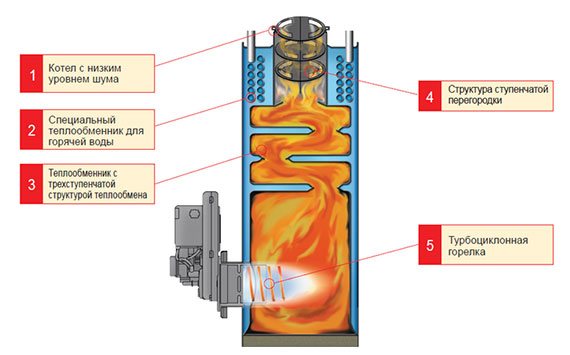
Diesel boiler in section
- Metal heat exchanger. It consists of tubes that are heated by the heat released during fuel combustion. Inside them there is a coolant, which is distributed through the radiators using a circulation pump. Made from stainless steel, copper or cast iron.
- Chimney. Combustion products and residual vapors are discharged here. In modern configurations, there is also part of the heat exchanger, which is heated by the escaping smoke and steam, which allows increasing the efficiency of the device.
- Electronic control system. Coordinates the operation of all components of the liquid fuel boiler according to user settings.
- The body is made of steel and is additionally covered with a heat-insulating gasket from the inside.
The pump pumps fuel into the preheating chamber, then it enters the diesel burner and is sprayed into the combustion chamber through a nozzle under pressure from the internal fan. On the other hand, oxygen is supplied to the furnace, pumped by a fan. The electrodes create a spark and ignite the mixture of air and fuel.
The heat is transferred to a heat exchanger, which is located around and on top of the combustion chamber. The coolant is heated inside it and circulates through the heating system. Combustion products are discharged through the chimney. All components are coordinated by an electronic control system, which sets the required operating mode and temperature.

Kiturami boiler control system
Dual-circuit models are also produced that have an additional heat exchanger for domestic water. Usually it is located above the main one and allows you to provide the house with hot water supply.
If you want to provide domestic hot water using a single-circuit boiler, you need to additionally install an indirect heating boiler. Some double-circuit devices are equipped with a small indirect heating boiler instead of a second heat exchanger.
Principle of operation
The operating principle of a modern liquid fuel boiler
Modern liquid fuel boilers operate as follows: fuel atomized by a fan burner is supplied to the combustion chamber under high pressure. Mixing with air, the fuel ignites. During the combustion period, sulfur accumulates on the walls of the boiler.
Liquid fuel boilers are:
- with single-stage burners;
- with two-stage burners;
- with three-stage burners.
According to the type of water heating, boilers operating on liquid fuel are divided into:
- single-circuit;
- double-circuit, which uses flow-through water heating;
- double-circuit, equipped with a hot water boiler.
The heat exchanger of liquid fuel boilers can be steel or cast iron.
The type of draft can be natural, in which case the gases are removed through the chimney. When forced draft is used, combustion products are removed using a coaxial chimney.
How to calculate the average daily consumption of diesel fuel in a boiler
A simple calculation of fuel consumption is performed according to the formula, 1 kg of fuel = 10 kW. It turns out that to obtain thermal energy of 10 kW (sufficient to heat a residential building of 100 m²), you need to spend 1 kg of diesel fuel. The average daily amount of fuel consumed by a diesel boiler will accordingly be 24 kg.
The specific consumption rate in professional conditions is calculated depending on the power of the burner device. Calculation formula: 0.1 × burner capacity. Cost calculations are performed for the entire heating season.
They do this as follows:
- Within an hour, a 10 kW boiler consumes 1 kg of diesel fuel.
- 24 kg are consumed per day.
- The average heating season lasts 100 days, and half the time the boiler will operate at 50% capacity. As a result of calculations, the actual consumption is equal to 5000 liters of fuel per year.
Rules for using the boiler
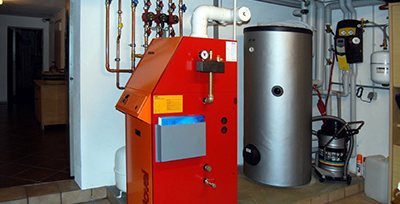
For normal operation of the device, it is important to comply with the requirements specified by the manufacturer.
They relate to the boiler room, the quality of diesel fuel, installation and operation regulations, compliance with environmental standards and fire safety requirements.
Installation room requirements
The heater is installed in a boiler room, separated from residential and non-residential rooms by a partition made of non-combustible materials. If the boiler power is from 60 to 350 kW , it is installed in a technical room outside the house.
Supply and exhaust ventilation is installed in the boiler room The presence of windows and vents is required. The width of window openings depends on the operating rules of a particular device.
The floor and walls are covered with non-combustible materials (ceramic tiles, brick, plaster). The ceiling is sheathed with gypsum fiber boards.
The chimney is installed in accordance with fire safety regulations. At the point where the pipe exits, a cutting is made of non-combustible materials.
Quality of diesel oil
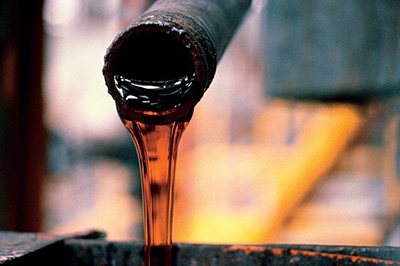
The quality of diesel fuel is determined by the requirements of the Technical Regulations and state standards in force in Russia.
These documents regulate the fractional composition, pour point, cloudiness, viscosity, fuel density, sulfur content, resins, flash point.
Fuel manufacturers offer to buy diesel fuel for boilers with the following average characteristics:
- cetane number - 40–45;
- boiling point - 240–400 °C;
- density (at +15 °C) - 813.7 kg/m3;
- presence of sulfur - 0,508%;
- viscosity - 5–9 mm2/s.
Attention! Diesel fuel is stored in closed metal containers to prevent mechanical impurities, water and other liquids from getting into the product.
Calculation of the amount of fuel for the boiler
To obtain 10 kW of thermal energy, 1 kg of diesel fuel is consumed (per hour) . The permissible deviation from the standard is 5–10%.

If the flow rate differs from the standard by 20% or more , diagnostics of the heat generator is required.
Based on this norm, the required amount of diesel fuel is calculated for a day, a week, a month and for the entire heating season. The calculations take into account how the heater will operate (at full or partial power).
Example calculation:
- A boiler (10 kW) consumes 1 liter of diesel fuel per hour, 24 liters per day.
- The heating season lasts 80 days , of which 40 days the heater operates at 100% power, the rest of the time at 50% power.
- 24 liters * 40 days = 960 l.
- 12 liters*40 days=480 liters.
- 960+480=1440 l. for the heating season.
The calculation is approximate. Fuel consumption is adjusted based on weather conditions.
How to save on fuel? Criteria for choosing heating equipment
Units consuming liquid fuel are designed for both one and two circuits. And it is quite obvious that in the second case, fuel consumption will be greater, which will only increase costs. For this reason, the best option for dual-circuit appliances can only be to reduce the consumption of hot water, which will help save on fuel.
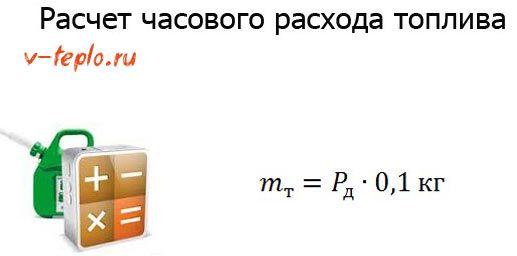
Experts advise one more thing. According to them, fuel consumption can also be reduced by setting a lower temperature for the coolant. And the final point - it is advisable to install a thermostat in the warmest room. If you follow all these recommendations, you will be able to reduce the fuel consumption required for the operation of the boiler and save a certain amount of money.
On many thematic forms, users are interested in: which units are more economical - diesel or electric? And what is the general fuel consumption of a diesel heating boiler? It is quite difficult to answer this question unambiguously, since it depends on a number of factors, including:
- quality of building thermal insulation;
- cost of the fuel used;
- area of the heated room;
- features of a specific climate zone;
- number of residents in the house.

And if you know about all these factors, then you can roughly calculate the consumption of both fuels by comparing costs. And now - some more practical advice regarding the choice of a heating unit.
- Heating equipment that consumes diesel fuel, if there is a combustion chamber made of steel, will be immune to temperature changes. At the same time, steel undergoes a rusting process, so it does not last as long as, for example, cast iron.
- The higher the cost of a heating boiler, the higher the risk that its maintenance will cost you very much (when compared with models that have a lower cost).
- Devices that are equipped with a cast iron combustion chamber can last up to twenty years, but temperature changes affect them quite significantly. In this kind of heating systems, it is necessary to install valves that will mix the heated liquid into the return pipeline. All this is required so that the combustion chamber simply does not split.
Convection or condensation
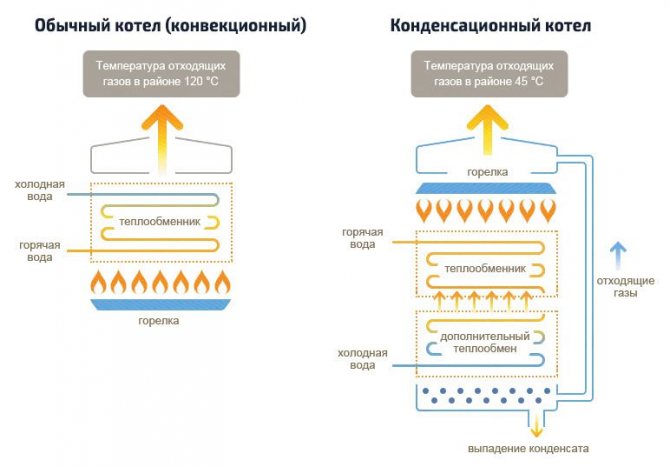
The efficiency, and therefore the economy, of a diesel heating boiler depends on the method of using the thermal energy released during the combustion of diesel fuel:
- convection - a standard type of boiler in which the coolant is heated by direct combustion of fuel, part of the heat is lost with combustion products (exhaust gas temperature is about 75-110°C);
- condensing - a modern boiler design that implies the presence of an additional heat exchanger that extracts heat from condensate, which in turn is formed from combustion products leaving the chimney. Thus, it is possible to accumulate almost all the heat obtained during combustion (the temperature of the exhaust gases is on average 35-45°C).
As a result, the efficiency of condensing boilers is 15-20% higher, however, the cost of such models is 1.5-3 times higher: usually from 100 thousand rubles. Therefore, the payback of such technology depends on the volume of fuel burned.
Wall or floor
Due to the larger dimensions of the burner and the greater weight of the boiler unit as a whole, diesel boilers are usually floor-standing. There are also wall-mounted models, for example, the Swedish CTC 950 RU. However, at the moment we do not recommend considering them for purchase: it is difficult to find them on sale, wall-mounted models are 1.5-2 times more expensive than floor-standing analogues, and the service structure is often not so developed even in Moscow and Moscow Region, not to mention the regions .
Single-circuit or double-circuit
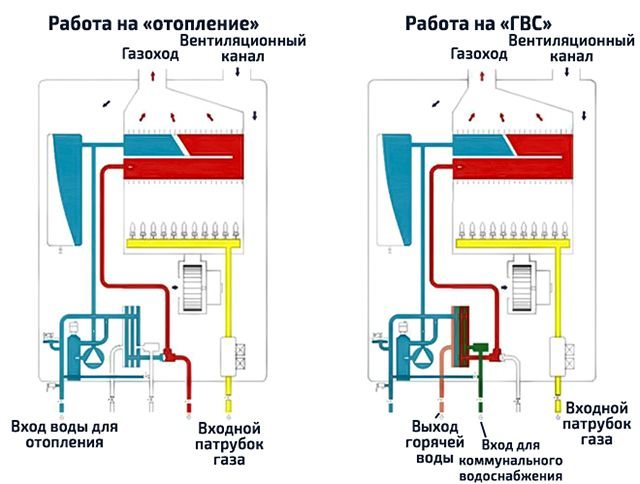
Single-circuit models are designed exclusively for heating. Double-circuit systems have an additional hot water supply (DHW) circuit and when the tap is opened at the point of consumption, they begin to heat sanitary hot water, which does not mix with technical water in the heating circuit. Of course, the choice depends on the requirements for the boiler.
At first glance, it is better to choose a single-circuit boiler, since the cost of fuel is already high. However, dual-circuit models are still more effective, this is confirmed by the significantly greater demand for them. The cost of a double-circuit boiler in the budget and mid-price category is only 5-15% higher, while to organize hot water supply in a house in another way you will need from 15 to 50 thousand rubles, and the cost of electricity that will be spent on heating is higher than the cost diesel fuel.
Possible scope of work
Boiler equipment operating on liquid fuel is most often produced by manufacturers in a floor-standing design. Therefore, it is necessary to allocate a special place for the installation of a floor-standing diesel boiler unit. The weight of the unit depends on its thermal performance and for smaller models it is not necessary to prepare a foundation. However, for placement you will need a base raised by 25-20 cm in the form of a concrete podium or a metal welded frame-stand.
Installation of diesel boilers, regardless of the model being installed, involves the following work:
- Selecting a location for installation and developing a wiring diagram
- Placing a liquid fuel storage tank
- Installation of diesel boiler and auxiliary equipment
- Assembly and connection of the chimney
- Organization of an air ventilation system for efficient fuel combustion
- Connection to the heating system and heat exchangers
- Connecting a diesel heating boiler to the electrical network
- Testing, trial run and adjustment
The requirements for the room in which a diesel heating boiler is installed are no different from the standards for a gas boiler room. However, it is not necessary to obtain special permits for the use of liquid fuel equipment.
Installation of diesel boilers for space heating is a quick and simple solution to the problem in the absence of centralized gas supply networks and solid fuel reserves. At the same time, it should be noted that burning diesel fuel is the most expensive heat supply option.
Review of models from leading companies
A worthy niche in the heating equipment market is occupied by liquid fuel boilers from foreign manufacturers: ACV, EnergyLogyc, Buderos Logano, Saturn, Ferolli and Viessmann. Among domestic companies, Lotos and TEP-Holding have proven themselves well.
Universal boilers ACV Delta Pro
The Belgian company ACV sells models of the Delta Pro S line - double-circuit boilers with a built-in boiler. The power of heating units ranges from 25 to 56 kW.
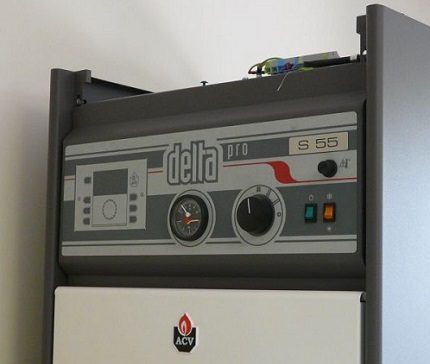
Delta Pro S boilers are supplied with a burner of the buyer’s choice - either model BMV1 for liquid fuel or BG2000 for propane and natural gas
Technical and operational features:
- heat exchanger material – steel;
- polyurethane foam insulation of the body;
- operation on diesel fuel or gas;
- control panel with thermometer, control thermostat.
The liquid fuel boiler “adjusts” to the season - a “winter/summer” switch is provided.

The efficiency of Delta Pro S boilers is 92.8%. The water heating time for the DHW system depends on the power of the installation and ranges from 16 to 32 minutes
EnergyLogyc units – intelligent automation
Waste oil boilers from the American company EnergyLogyc differ from their analogues in the automated processes of setting up the burner and burning fuel.
The fuel used is waste oil, diesel fuel, vegetable oil or kerosene.
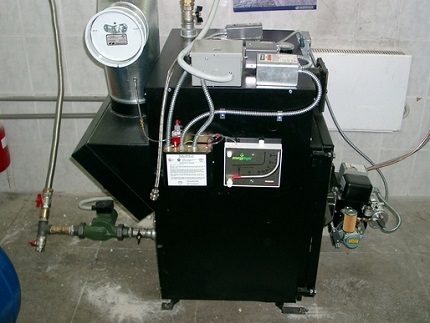
The device has increased the size of the firebox and the cross-section of the smoke pipes - this makes it possible to effectively use “working off” and reduces the number of boiler cleaning jobs
EnergyLogyc liquid fuel units are available in three modifications:
- EL-208B – power 58.3 kW, fuel consumption – 5.3 l/h,
- EL-375B – performance 109 kW, fuel consumption – 10.2 l/h;
- EL-500B – thermal power – 146 kW, fuel consumption – 13.6 l/h.
The maximum coolant temperature in the presented models is 110°C, operating pressure is 2 bar.
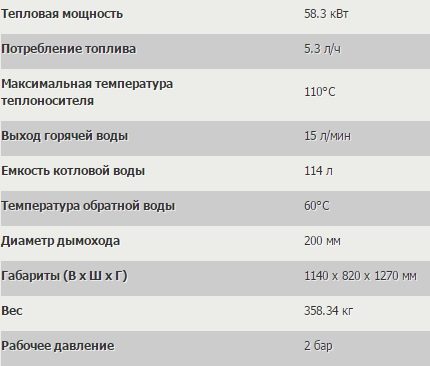
The EL-208B boiler is suitable for heating premises for various purposes: cottages, greenhouses, car services, production shops, warehouses, private homes and offices
Buderos Logano – German quality
The Buderos company (Germany) produces diesel boilers, nozzles, burners and other equipment necessary for operating the heating system. The range of power characteristics of the units is 25-1200 kW.
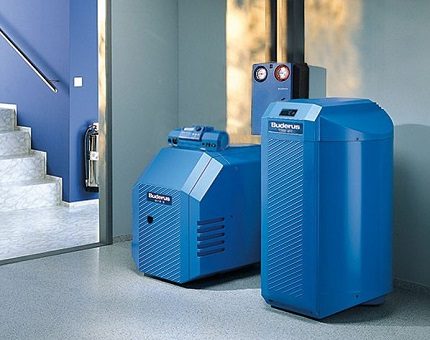
The efficiency of Buderos liquid fuel boilers is 92-96%. The equipment operates in fully automatic mode, the fuel material is diesel fuel. Heat exchanger made of gray cast iron or steel
Buderos Logano boiler systems are produced in two series:
- Buderos Logano category “G” - intended for private use, their power is 25-95 kW;
- Buderos Logano category “S” – equipment for industrial use.
The units are distinguished by a streamlined design, a convenient control system, and a built-in silencer.
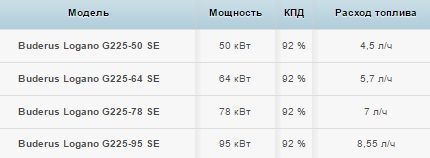
Buderos Logano domestic boilers are supplied with built-in and adjusted diesel fuel burners. The device can be equipped with a pump group, a security system and an expansion tank
Boilers from the Korean company Kiturami
Kiturami Turbo series floor-standing double-circuit boilers are designed for domestic use. The power of the units is 9-35 kW.
Installation of a liquid fuel boiler
Installation of a liquid fuel appliance for heating a private home is carried out taking into account fire safety requirements and building codes:
- the boiler room must have natural and artificial lighting, as well as forced supply and exhaust ventilation,
- Only non-combustible materials are used for cladding indoor surfaces. It is also necessary to take care of sound insulation,
- The installation of a liquid fuel heating boiler is carried out taking into account fire safety gaps. When installing a chimney through the wall and roof slabs, the pipe is installed in a special groove.
A room with sufficient area is allocated for the boiler room to ensure comfortable operation and maintenance of the equipment.
Advantages of diesel boilers
- Power and performance. Using the devices, you can warm up even large rooms, and the high efficiency allows you to use fuel efficiently.
- Possibility of adjusting the heating temperature - during thaws you can reduce the heater power, and during frosts you can increase it without overusing fuel.
- Autonomy. With a diesel heater, the room will always be warm, regardless of the presence of a gas main nearby.
- There is no need to obtain permits for connecting and installing equipment, unlike gas heating. There is no need to call the gas service to install the boiler.
- Availability - diesel fuel can be purchased at almost any gas station.
- Safety ensured by the automation of the device.
- Possibility of switching to liquefied gas - if necessary, most diesel boilers can be easily converted to gas fuel by replacing the burner.
Pros and cons of liquid fuel heat generators
The key advantages of boilers operating on liquid fuel include the ability to efficiently heat a room and technical excellence. The following competitive advantages of equipment in this category are also noted:
- high productivity with economical consumption of fuel resources. Efficiency varies in the range of 85-95%,
- high power of the unit. Using a liquid fuel heat generator, you can heat both compact housing and spacious households or large-scale production facilities,
- independence from the power grid, with the exception of electricity. But here too the problem is solved with the help of generator sets. The device can operate completely autonomously,
- high level of automation systems. If there is a sufficient amount of fuel, the equipment operates smoothly without human intervention. In case of possible disturbances in the working process, an emergency shutdown of the unit is triggered,
- Modern equipment models provide the possibility of switching to gas fuel.
- Another important plus is that there is no need to coordinate and obtain permission to install a heat generator of this category.
The main disadvantages of using liquid fuel heating boilers are associated with the difficulties of arranging a storage facility for combustible resources. This requires the construction of a separate building. Most often, an underground warehouse is equipped in the form of tanks made of transparent plastic or steel containers.
To operate the heat generator, it is necessary to equip a separate room with a powerful exhaust hood to ensure good ventilation. High-quality sound insulation of the boiler room will be required if it is located close to the house, since the operation of a diesel burner is associated with characteristic noise.
The big disadvantage of heating units in this category is the significant cost of purchasing fuel. This is especially noticeable during intensive use of equipment.
Disadvantages of technology
- For full operation, the boiler requires a special container for storing fuel. Such a tank takes up quite a lot of space, and therefore it is customary to allocate a separate room for the boiler and tank.
- The boiler room must be equipped in accordance with fire safety rules, and also have a connection to ventilation to remove combustion products. In addition, to prevent diesel fuel from freezing, it is recommended to install heating in the boiler room.
- During active operation, the device is quite noisy, unlike its electric counterparts.
Rules for installing heating boilers using diesel fuel
There are a number of requirements for the room in which it is planned to install boiler equipment:
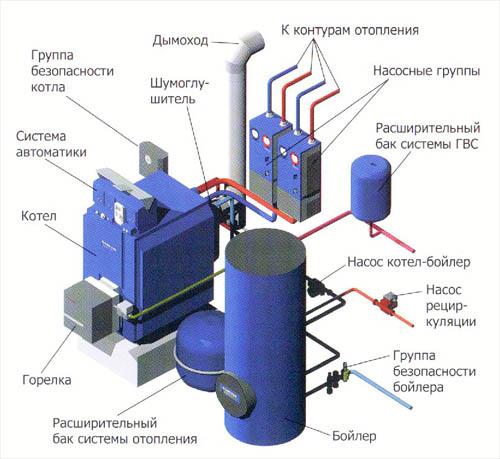
- The boiler room must be located in a separate building. Since all diesel installations are equipped with forced-air burners with a powerful fan, it is recommended to place the equipment in a separate building. In addition, the large dimensions do not allow compact installation of the boiler in a basement or room.
- The ceilings in the boiler room should not be lower than 2.5 meters.
- The walls should be concrete or brick, and their surface should be tiled or covered with mineral plaster. The distance from the walls to the surface of the boiler should not be less than 1 meter.
- The room must be equipped with a supply ventilation system and exhaust hood.
If it is not possible to install a floor-standing diesel heating boiler in a separate building, then the room in the house or workshop should be well soundproofed and protected from fire. In any case, according to fire safety rules, you should not store more than 900 liters of fuel in the tank.
Specifications
- 0.24–2.8 MW
- 3.2–18.0 MW
- 20.0–60.0 MW
| Boiler room type | 0,24 | 0,3 | 0,4 | 0,5 | 0,6 | 0,7 | 0,8 | 1,0 | 1,24 | 1,6 | 1,7 | 1,9 | 2,0 | 2,4 | 2,6 | 2,8 | |
| Nominal heating capacity, MW (Gcal/hour) | 0,24 (0,21) | 0,3 (0,26) | 0,4 (0,34) | 0,5 (0,43) | 0,6 (0,52) | 0,7 (0,6) | 0,8 (0,69) | 1,0 (0,86) | 1,24 (1,06) | 1,6 (1,38) | 1,7 (1,46) | 1,9 (1,7) | 2,0 (1,72) | 2,4 (2,06) | 2,6 (2,24) | 2,8 (2,4) | |
| Power consumption, kW no more * | 3,0 | 3,7 | 4,3 | 5,8 | 8,0 | 11,0 | 11,7 | 12,2 | 13,0 | 16,0 | 20,0 | 22,0 | 23,0 | 24,0 | 25,0 | 26,0 | |
| Mains voltage, V | 220/380 | ||||||||||||||||
| Fuel | Diesel fuel. | ||||||||||||||||
| Maximum diesel consumption, kg/hour | 22 | 30,2 | 40 | 50,3 | 54 | 69,8 | 70 | 90 | 120 | 152,5 | 160 | 225,2 | 231,1 | 234,6 | 238,8 | 240 | |
| Boiler room temperature, °C | 95 (115) — 70 | ||||||||||||||||
| Temperature of flue gases, at rated heating capacity, °C | 160-190 | ||||||||||||||||
| Efficiency factor (excluding losses in heating networks), % | 99,5 | ||||||||||||||||
| Boiler room operating mode | Automated | ||||||||||||||||
| Overall dimensions of the boiler room, m | 7,2×2,45×3,1 | 8,6×2,4×3,1 | 4,8×7,2×3,2 | 7,2×7,2×3,2 | 9,6×7,2×3,2 | ||||||||||||
| Boiler room type | 3,2 | 3,6 | 4,0 | 4,8 | 5,0 | 6,0 | 6,3 | 8,0 | 9,0 | 10,0 | 12,0 | 14,0 | 15,0 | 16,0 | 18,0 |
| Nominal heating capacity, MW (Gcal/hour) | 3,2 (2,75) | 3,6 (3,1) | 4,0 (3,44) | 4,8 (4,13) | 5,0 (4,3) | 6,0 (5,2) | 6,3 (5,4) | 8,0 (6,9) | 9,0 (7,7) | 10,0 (8,6) | 12,0 (10,3) | 14,0 (12,0) | 15,0 (12,9) | 16,0 (13,8) | 18,0 (15,5) |
| Power consumption, kW no more * | 27,0 | 35,0 | 53,0 | 55,8 | 68,0 | 77,0 | 110,0 | 117,0 | 122,0 | 130,0 | 136,0 | 142,0 | 150,0 | 157,0 | 173,0 |
| Mains voltage, V | 380 | ||||||||||||||
| Fuel | Diesel fuel. | ||||||||||||||
| Maximum diesel consumption, kg/hour | 300 | 385 | 400 | 458 | 500 | 662 | 700 | 824 | 964 | 980 | 1226 | 1226 | 1380 | 1436 | 1774 |
| Boiler room temperature, °C | 95 (115,130,150) — 70 | ||||||||||||||
| Flue gas temperature, at rated heating capacity, °C | 160-190 | ||||||||||||||
| Efficiency factor (excluding losses in heating networks), % | 99,5 | ||||||||||||||
| Boiler room operating mode | Automated | ||||||||||||||
| Overall dimensions of the boiler room, m | 12,0×7,2×3,1 | 14,4×7,2×3,2 | 16,8×7,2×3,2 | 21,0×7,2×3,2 | 24,0×8,6×4,0 | 24,0×8,6×4,0 | |||||||||
| Boiler room type | 20,0 | 23,3 | 24,0 | 27,0 | 28,0 | 30,0 | 32,0 | 34,8 | 36,0 | 37,8 | 40,0 | 46,5 | 50,0 | 52,3 | 60,0 |
| Nominal heating capacity, MW (Gcal/hour) | 20,0 (17,2) | 23,3 (20,0) | 24,0 (20,6) | 27,0 (23,2) | 28,0 (24,1) | 30,0 (25,8) | 32,0 (27,5) | 34,8 (29,9) | 36,0 (31,0) | 37,8 (32,5) | 40,0 (34,4) | 46,5 (40,0) | 50,0 (43,0) | 52,3 (45,0) | 60,0 (51,6) |
| Power consumption, kW no more * | 188,0 | 198,0 | 353,0 | 362,0 | 365,0 | 369,0 | 373,0 | 390,0 | 417,0 | 421,0 | 425,0 | 452,0 | 524,0 | 547,0 | 590,0 |
| Mains voltage, V | 380 | ||||||||||||||
| Fuel | Diesel fuel. | ||||||||||||||
| Maximum diesel consumption, kg/hour | 1770 | 2000 | 2110 | 2420 | 2530 | 2730 | 2880 | 3050 | 3170 | 3170 | 3540 | 3980 | 4300 | 4400 | 5300 |
| Boiler room temperature, °C | 95 (115,150) — 70 | ||||||||||||||
| Flue gas temperature, at rated heating capacity, °C | 150 | ||||||||||||||
| Efficiency factor (excluding losses in heating networks), % | 99,5 | ||||||||||||||
| Boiler room operating mode | Automated | ||||||||||||||
| Overall dimensions of the boiler room, m | 24,5×8,6×4,0 | 24x 12x7 | 27x12x7 | 30x12x7 | 30x15x7 | 42x15x8.7 | 45x15x8.7 | ||||||||
Design and principle of operation of a liquid apparatus
The construction of a liquid fuel boiler is simple. The unit consists of:
- Air intake;
- Fan;
- air blower;
- combustion chambers;
- glow plugs;
- heat exchanger;
- sensors;
- control unit;
- fuel metering pump;
- holes for air supply;
- exhaust gas removal.
Regardless of what type of liquid is chosen for heating, the design of the liquid fuel boiler does not change. The device is rebuilt from one fuel to another by replacing the burner.
Fuel storage tank
Now comes the fun part. An oil-fuel boiler requires a container for storing fuel, and I listed this as a disadvantage a little higher.
The calculations shown above indicate that a capacity of several tons is needed. There is no need to invent anything here and it is better to buy a ready-made container with all the built-in equipment: a float, a vapor outlet, a drain valve, a fuel intake kit, a pipeline for discharging fuel to the burner, etc.

Material for containers is steel, polyethylene, fiberglass.
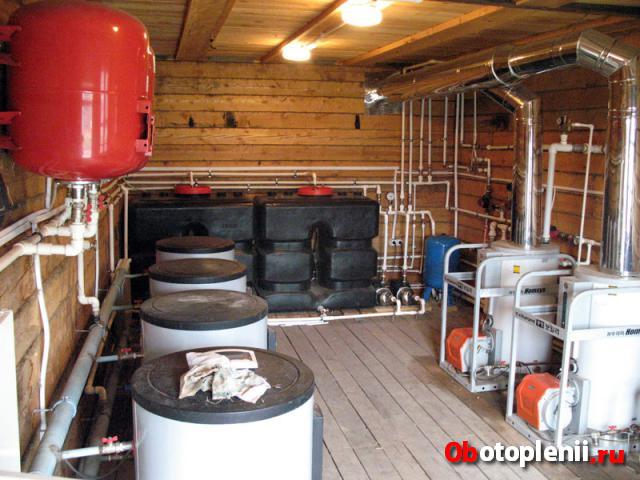
To install the tank, site preparation, excavation, concreting and a lot of special work will be required. You need to understand this and most likely, you will have to hire specialists.
Liquid fuel and gas
Boilers operating on these types of fuel are practically the same in design, so the decision to combine them in a combination boiler is very rational. The boilers can operate on both natural and liquefied gas, as well as diesel fuel, and only a slight adjustment of the burner is required to switch from one type of fuel to another. At the same time, the thermal power of the boiler does not change, as well as its operating modes.
When purchasing such a boiler, natural gas is usually chosen as the main fuel - it is cheaper, more environmentally friendly and safer. For backup fuel (diesel), it is necessary to provide a tank, as well as a storage room. The removal of combustion products for these types of fuel is carried out in the same way, so no other adjustments are required. The use of gas or liquid fuel allows uninterrupted heating of large premises, which is why such boilers are most often used for heating private houses with permanent residence.

Boilers running on liquid fuel and gas
Automation (control)
According to its characteristics, fuel can be supplied to the boiler independently; it does not need to be thrown in like firewood. Therefore, in boilers of this type, maximum attention is paid to automatic control, which minimizes the presence of a person in the operation of the boiler.
Using the example of the Kiturami boilers I came across, let’s see what is included in the boiler automation. On the body we see sensors for fuel level, temperature, and overheating. Yes, electronic remote control unit. Boiler indicators allow you to monitor the temperature of the coolant in the heat exchanger, circulation pump, burner, and power supply. Tricky buttons “Sleep”, “Shower”, also elements of universal automation. That's a plus.
Advantages of liquid fuel units
Liquid fuel heating boilers have a high level of efficiency; their performance exceeds 90%. Devices may vary in power. The combustion process occurs under constant monitoring of sensors. The incoming information from the sensors to the remote control is processed. If the temperature parameters specified by the user for a heating boiler using liquid fuel deviate, the adjustment occurs automatically.
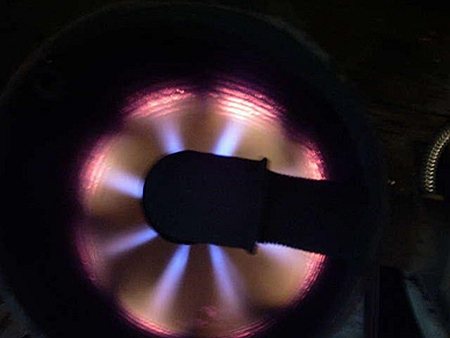
Rice. 1 Ventilation burner
Sensors used in liquid fuel heating boilers:
- combustion sensor;
- device safe start sensor;
- vacuum gauge, it shows the presence of nitrogen oxide and soot;
- a pressure gauge monitors the pressure in the firebox.
The unit, not connected to the gas main, runs on gas coming from a tank connected to a liquid fuel heating boiler with special hoses.
Gas burners are divided into classes according to their characteristics. This depends on the type of liquid used for the heating boiler, the power of the fuel pump, the size of the firebox, the diameter of the pipe located inside it, and the throughput of the burner nozzle.
Advantages and disadvantages of liquid fuel boilers
The advantages of the product include:
- Ease of installation. The boiler only needs to be connected to the heating system and chimney.
- High efficiency. Modern liquid fuel heating boilers have an efficiency of around 95%. This value indicates maximum heat transfer and high efficiency.
- Saving. Many models have a boiler water temperature reduction mode - when the ambient temperature reaches a preset level, the device automatically turns off.
- Availability of fuel. Diesel boilers can be considered a cheap option, since diesel fuel can be purchased almost anywhere in the country.
- Independence from centralized heating.
- Regulation of fuel consumption.
- No smell or noise.
- Possibility of installing the boiler in any convenient place.
Boilers also have a number of disadvantages, they are not significant, but you should know about them before you go shopping:
- It is necessary to purchase a container for storing fuel.
- A chimney will be needed to remove exhaust gases.
- Those who live in northern latitudes will need a fuel heater.
- Electrical energy is required for normal operation of the air supply fan and pump.
Rating of diesel boilers
Diesel boilers must be practical, made in accordance with all technical rules, meet maximum strength and safety for humans. The rating of diesel boilers for the home was based on the results of comparative tests, expert opinion, and consumer reviews. They all gave identical answers, so to be completely sure that the choice was correct, additional characteristics were also taken into account:
- Material;
- Fuel consumption;
- Options;
- Type of accommodation;
- Type of burner;
- Price.
Additional technical characteristics made it possible to construct a rating that shows which models need to be emphasized.
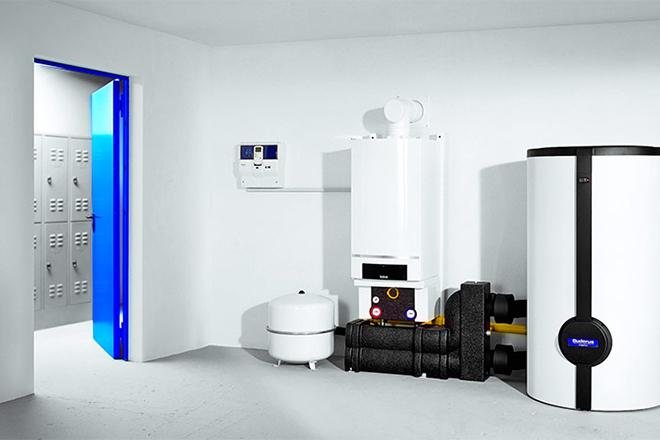
The best economical boilers
Operating principle of an oil-fuel boiler
Liquid fuel boilers, like gas boilers, have a combustion chamber and a heat exchanger:
True, a liquid fuel burner has a more complex design, since diesel fuel enters the combustion chamber not by gravity, but under pressure created by a pump:
Under pressure, the fuel is atomized, after which it is mixed with air forced by the fan, and only then does this mixture enter the combustion chamber. A fine fuel filter is also required in the system, since liquid fuel boilers are very sensitive to fuel quality.
Well, liquid fuel boilers cannot do without automation: all devices (pump, fan, etc.) are controlled by a boiler regulator.
Disadvantages of liquid fuel heating boilers
The main disadvantage associated with the use of liquid fuel boilers is considered to be high fuel consumption. Although diesel itself is not very expensive, the costs can still be significant if the heating system is used intensively. It should also be taken into account that the liquid fuel boiler must be placed in a separate room. Therefore, such a unit is not suitable for small houses or summer cottages.
Otherwise, there are no serious disadvantages to this element of the home heating system. Owners who are satisfied with these features of liquid fuel boilers can safely use them.
What are the advantages of heating with liquid fuel?
Liquid fuel heating has the following advantages:
- the liquid fuel boiler operates fully automatically, so you don’t have to bother constantly adding fuel, as is the case with wood-burning boilers;
- an oil-fuel boiler is not inferior in efficiency (in the sense of efficiency) to a gas boiler;
- to install an oil-fuel boiler, you do not need permission;
- a diesel generator can be added to the boiler, which will satisfy the electricity needs;
- the ability to have autonomous heating at home. To tell the truth, I do not agree with this statement: autonomy implies the ability to do without external resources. This is possible if we have an oil/gas well in our garden and an oil refinery in the barn. But since heating with liquid fuel depends on the supply of this fuel from outside, then... where is the autonomy here? If there was a disruption in the economy and... well, in general, it’s understandable. In my opinion, if you use liquid fuel for heating, then duplicate it with a solid fuel boiler:
